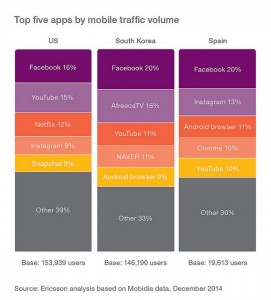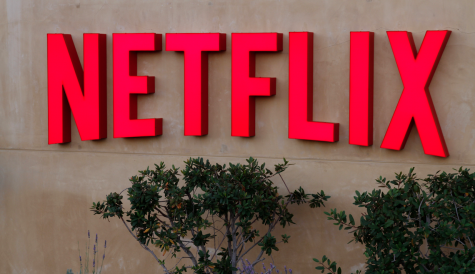Mobile video traffic to grow seventeen-fold
 Total mobile video traffic in the next six years will be around 17 times that of last six years, according to the latest Ericsson mobility report.
Total mobile video traffic in the next six years will be around 17 times that of last six years, according to the latest Ericsson mobility report.
The global research, published ahead of Mobile World Congress next week, claims that two-thirds of app data traffic over mobile networks comes from just five of the most popular apps in each country studied, with video streaming and social networking dominating.
While Facebook was found to be the number one app in each country studied, mobile video “dominates traffic growth”, with Ericsson forecasting it to grow by around 45% annually through to 2020 when it will account for around 55% of all mobile data traffic.
“Prominent factors driving this rapid growth include increased number of video-enabled devices, larger screens, and better picture quality. Another prominent driver is that video is becoming an increasing part of online content, such as news, adverts, and social media. Video is increasingly shared via popular social sites, such as Twitter,” said Ericsson.
The research claims that accumulated mobile data traffic for video was 25 ExaBytes during 2009-2014 and will rise to 440 ExaBytes for 2015-2020. Total mobile data traffic will climb from 70 ExaBytes to 860 ExaBytes over the same period of time.
Breaking down mobile traffic volume in a few key markets, Ercisson said that in the US in December Facebook accounted for 16% of mobile traffic, followed by YouTube at 15% and Netflix at 12%. In Spain the most popular apps were Facebook and Instagram with 20% and 13% of traffic respectively.
The Mobility Report claims that 800 million smartphone subscriptions were added worldwide for full year 2014, taking the total number to 2.7 billion. This was up 40% from a total of 1.9 billion smartphone subscriptions in 2013.
The study also noted a decline in the numbers of people watching broadcast TV, at the same time that streaming services gain more traction.
“This year for the first time more people will watch streamed on demand video than broadcast TV over a weekly period in those markets. Drivers for this change include the advent of 4G technology, the growth in smartphone and tablet usage, and a shift in consumer behaviour towards easy-to-use, on-demand services that offer cross-platform access to content,” said Ericsson.


